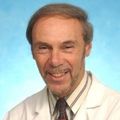BENEFICIAL MICROBES: Sharing of the Microbial Informational Library
-
John Thomas, PhD
Professor Emeritus, WVU School of Medicine Certified, "High Complexity Clinical Laboratory Director" (HCLD)(ABB)BIOGRAPHY
INTRODUCTION: The recent coincidental emergence of the human microbiota and the Hologneomic Theory of Co-evolution unmasked the “Dual Citizenship” of symbiotic microbes and human ecosystems, sharing of 2 global “Passports” and our themes that “Microbes Matter“ and “Don’t Trash your Microbiota/Mycobiota.” It also unmasked the concept of Beneficial Microbes (both bacteria and fungi), where given the overwhelming genetic strength of our microbial microbiota and the interface in disease and health, created a new concept of “self”. SCIENCE: Here, we highlight Beneficial Microbes (BM) in 5 parts. Part 2, addresses the “What”, including definitions, while unmasking the variety of BMs (Search, Homing, Destroy), emphasizing the unique role of biofilms as a key ingredient and the genetic strength within. Part 3 addresses “How” BMs work, focusing on 4 neuro-pharmacologic pathways and 3 established axial pathways: GUT, skin and vagina. Parts 4 and 5 bring clinical application and our unique amalgamation of our research to patient care. Part 4 utilizes our “Microbial Clock”, visualizing 10 metabolic endogenous diseases linked by a common pathway, including Aging, a recent NIH postulation, and Chronic Wounds, an exogenous disease where missing microbiota and mycobiota could be a central theme. Part 5 focuses on intervention in both, recognizing “restorative microbiology” and the use of probiotics as BMs in “organ transplants” using our Computer Assisted Decision Support via Bac-2-Health and Partners-4-Life data bases, organized for the public and health care professionals education. It is the beginning of “Precision Medicine”, the linking of Artificial Intelligence (AI) with disease management algorithms, integrating BMs. CONCLUSION: “We live in a Microbial World” with apologies to Madonna, which has been victimized by Louis Pastuer/Robert Koch themes as mostly pathogenic. One Health should be the new theme, maximized by utilization of the genetic strength of microbes as a benefit, recognizing caution and the down-stream impact on industry, clinical laboratories and our “psyche”.
BENEFICIAL MICROBES: Sharing of the Microbial Informational Library
Please update your information
Certificate of Participation
DOWNLOAD CERTIFICATE






